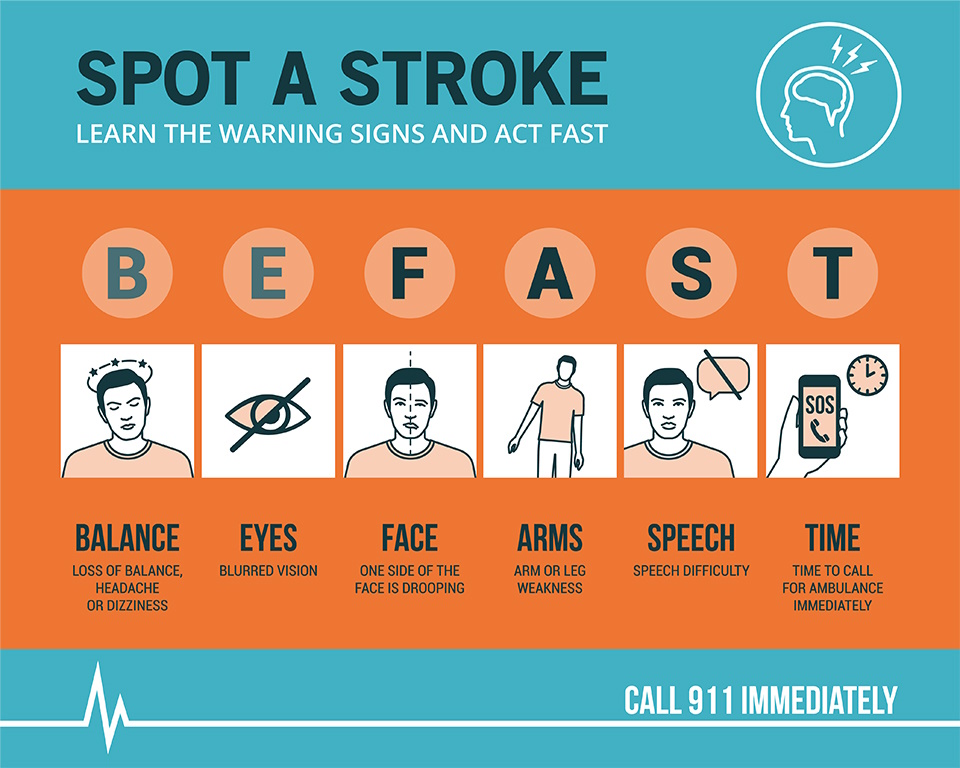Age and family health history can both make you more susceptible to having a stroke. And while you can’t change your birth date or genetics, you can take steps to alleviate your risk. The folks at Harvard Medical School and the CDC have narrowed them down to eight big behaviors.
1. Lower your blood pressure
High blood pressure is the biggest stroke risk contributor in both men and women. In fact, it can double or even quadruple your risk if it’s not controlled. That’s why it’s important to monitor your blood pressure and maintain a level of less than 120/80 if possible. If yours is elevated, talk to your doctor about how to treat it. That may include taking blood pressure medication.
2. Lose weight
Being overweight or obese (and the complications that can come with it) increases your risk for stroke. Fortunately, losing as little as 10 pounds can have a real impact on your stroke risk. It’s best to work with your doctor to better understand your unique needs and create a personal weight-loss strategy, but it’s likely to include eating no more than 1,500 to 2,000 calories a day (depending on your level of activity and your body mass index (BMI)) and increasing the amount of exercise you get.
3. Eat a healthy diet
Because it can contribute to weight gain and high blood pressure, a poor diet is an additional stroke risk. Choosing healthy meal and snack options can help prevent stroke. That includes eating foods low in saturated fats, trans fat, and cholesterol and high in fiber. It’s also a good idea to reduce the amount of salt in your diet and increase your intake of fruits and vegetables, fish, whole grains, and low-fat dairy.

4. Exercise more
Because physical activity can help you stay at a healthy weight and lower your cholesterol and blood pressure levels, it’s a great stroke-risk reducer. The Surgeon General recommends that adults get at least two and a half hours of moderate-intensity exercise each week. That can include a visit to the gym, your favorite outdoor activity, of just a brisk walk. But staying active is a great way to stay healthy.
5. Drink in moderation
Alcohol consumption has been linked to increased stroke risk because it can raise your blood pressure. That doesn’t mean you can’t have an occasional drink. Drinking a little alcohol (one drink per day, for example) is okay, and it may actually decrease your risk of stroke. But once you reach more than two drinks per day, your risk goes up very sharply. So try keeping it to a 5-ounce glass of wine, 12-ounce beer, or 1.5-ounce glass of hard liquor per day.
6. Treat atrial fibrillation
Atrial fibrillation is a form of irregular heartbeat that can cause clots to form in the heart. Those clots can then travel to the brain, producing a stroke. Atrial fibrillation increases your risk of stroke almost five times, so it’s critical to have it treated right away if you have it. If you experience heart palpitations or shortness of breath, see your doctor right away. You may be prescribed a blood-thinning drug to help reduce your stroke risk.
7. Treat diabetes
Having high blood sugar can damage blood vessels over time, making clots more likely to form. That’s one more reason why it’s important keep your blood sugar under control. Your doctor can help you with monitoring and medication if needed, and you can help with a healthy diet and regular exercise.
8. Quit smoking
Quitting smoking is one of the most powerful lifestyle changes you can make to significantly reduce your stroke risk. That’s because smoking accelerates clot formation by thickening the blood and increasing the amount of plaque buildup in the arteries. So if you don’t smoke, don’t start. And if you do, try everything you can to quit, whether it’s a nicotine patch, counseling, or medication. It’s hard, but you can do it and your doctor can help.
As these tips suggest, there are plenty of stroke risk factors we can control. And now that you know them, you can start reining them in before a stroke can strike you or someone you love.